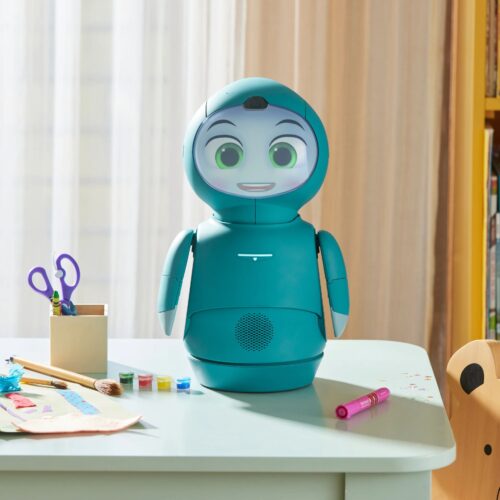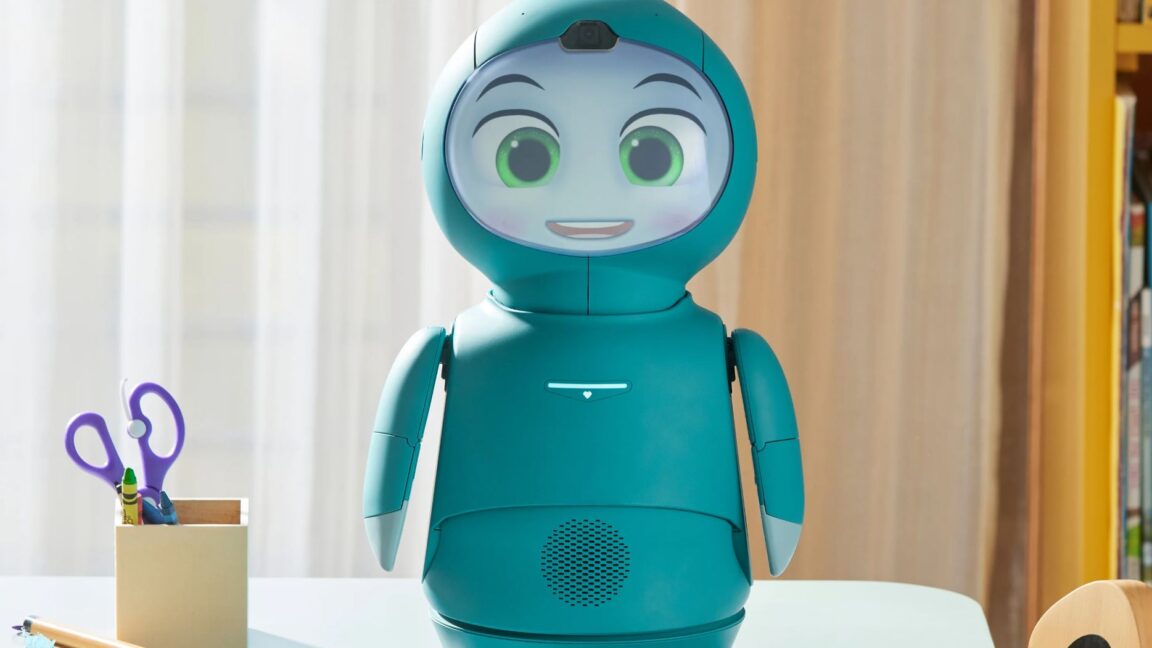The robots we saw at CES 2025: The good, the bad and the completely unhinged
It was an interesting year for robots at CES 2025. While we had hoped the AI boom would bring a new wave of useful robots to the show, it seems that many robotics companies are still figuring out exactly how to best use AI.
What we found instead was a mix of adorable robot companions, strange concepts and one, slightly terrifying humanoid. We visited a lot of robots at CES and, for better or worse, some really left an impression on us. These are the ones that stood out the most.
TCL Ai Me
Of all the surprisingly adorable robots we saw at CES, TCL’s Ai Me (pronounced “Amy”) was one of the cutest. The concept was on display at TCL’s booth delighting and bewildering everyone who walked by. With a voice and eyes that are meant to sound like an actual human child, TCL seems to be pitching this as an emotional support/companion robot for kids. At the booth, Ai Me wasn’t doing much besides moving around in its wheeled, egg-shaped base, but the company says that the AI-powered robot could be used to control smart home devices or record vlogs, thanks to built-cameras and AI capabilities.
For now, it’s unclear if TCL actually plans to sell this thing, but the company seemed to have put quite a bit of effort into its CES demo. In addition to the one slowly wheeling around a mock-up living room, TCL showed off a lineup of different outfits, including fuzzy bunny suits and a denim vest, for Ai Me. -Karissa Bell
Ropet
As we walked over to the Ropet booth, a person was waving a plastic hotdog in front of the little robot and small cartoon hotdogs flashed across its eyes in response. I was pretty much sold at that moment, but it turned out to have some other pretty interesting things going on too. Ropet responds to voice, touch and gestures, and has its own cute little emotional reactions. It’s conversational if you want it to be, with ChatGPT integration. Mostly it’s just adorable. -Cheyenne MacDonald
Mirumi
Mirumi is one of those CES oddities that makes you simultaneously go, “What the hell is this?” and, “Omg I love this.” It’s small, fluffy and has no other purpose than to make you smile by looking around and staring at you like an innocent baby. I immediately felt the need to protect it with my life. — CM
Romi
Romi is a conversational robot that fits in the palm of your hand and is here for you if you want to chat, vent or just hang out. The newest model of the robot turned up at Unveiled, and we couldn’t help but be charmed by its cute facial expressions. It fits nicely in your hands, so you can carry it around the house with you while you walk around complaining about your workday. -CM
Miroki
Miroki was at CES last year, but the Enchanted Tools team was back showing off the latest version and some new skills, including LLM integration. If you were able to fight through the crowd surrounding it to get up close, you may have seen it rolling around waving at people, blinking its big cartoon eyes and flicking its ears like a deer. Undecided on whether it’s cute or a little unnerving. -CM
Scorpion
Not sure which had a bigger presence at #CES2025, robots or "APT." pic.twitter.com/NLZWey94dI
— Engadget (@engadget) January 10, 2025
Scorpion is an AI bartender from Richtech Robotics that unfortunately wasn’t slinging drinks when we saw it (or scuttling around, apparently it doesn’t do that), but did perform a synchronized dance to “Apt.” with the company’s Adam bot. Come for the arthropodal robot, stay for the K-pop. -CM
Unitree G1 and "Robot Dog"
Of all the robots we saw at CES 2025, Unitree’s take the prize for most terrifying. The company was showing off its new quadruped “robot dog” and humanoid G1 robots. The quadruped, which is essentially their take on Boston Dynamic’s Spot robot, showed off to onlookers by running around the booth, climbing stairs and sitting on its “hind legs.”
But it was the G1 that proved to be the robot we needed to worry about. I was taking photos of the roughly 4-foot tall humanoid when it suddenly ran at me full-speed. I was only a foot or so in front of it at the time due to the crowd in the booth, so the roughly 60-pound G1 slammed directly into my body at an all out run. The surrounding crowd met I was essentially pinned in place for a few seconds while the robot continued to attempt to run through me until its operator was able to regain control. Fortunately, this was a case of user error and not the beginning of a robot uprising. The person holding the gamepad-like controller for the robot had mistakenly mashed the joystick, sending it directly into my body. At least I can now say I know what it feels like to be body slammed by a robot. -KB
Mi-Mo
One of the more unusual robots we saw at CES, Mi-Mo is a six-legged table with a lamp on top. We didn’t see Mi-Mo do much besides shimmy around the show floor and “wave,” but there are some really interesting ideas behind the AI-powered robot. It runs on multiple large language models and "thinks and acts" based on its environment. Its creators say it could help with childcare and eldercare tasks. Mi-Mo will be available to developers and researchers as a dev kit later this year. -KB
Reachy 2
Pollen Robotics was here at CES showing off Reachy 2, it’s latest machine that’ll cost you $75,000 if you have that sort of cash laying around. It’s an adorable open-source machine with a human pilot that, its makers say, is ideal for tele-operation and data acquisition. I just think it’s cute, especially when it waves at you. -Daniel Cooper
Additional reporting by Daniel Cooper.
This article originally appeared on Engadget at https://www.engadget.com/home/smart-home/the-robots-we-saw-at-ces-2025-the-good-the-bad-and-the-completely-unhinged-174529774.html?src=rss©
© Karissa Bell for Engadget





























